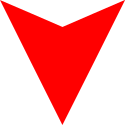Grand Prix Argentyny 1957
| ||||
| 57. Grand Prix Formuły 1 | ||||
 | ||||
| Data | 13 stycznia 1957 | |||
| Trasa | ||||
| Liczba okrążeń | 100 | |||
| Długość okrążenia | 3,912 km | |||
| Dystans | 391,200 km | |||
| Uczestnicy | ||||
| Zgłoszenia | 14 kierowców | |||
| Zakwalifikowało się | 14 kierowców | |||
| Ukończyło wyścig | 10 kierowców | |||
| Wyniki | ||||
| Pole position | Stirling Moss (1:42,6, Maserati) | |||
| Zwycięzca | Juan Manuel Fangio (3h00m55,9, Maserati) | |||
| Najszybsze okrążenie | Stirling Moss (1:44,7, Maserati) | |||
| 1. Grand Prix w sezonie 1957 | ||||
| Następne | Grand Prix Monako | |||
| Grand Prix Argentyny | ||||
| ||||
Grand Prix Argentyny 1957 (oryg. Gran Premio de la Republica Argentina) – 1. runda Mistrzostw Świata Formuły 1 w sezonie 1957, która odbyła się 13 stycznia 1957 po raz 5. na torze Autódromo Municipal Ciudad de Buenos Aires.
5. Grand Prix Argentyny, 5. zaliczane do Mistrzostw Świata Formuły 1.
Wyniki
Kwalifikacje
Źródło: statsf1.com[1]
| P | Nr | Kierowca | Konstruktor(-silnik) | Opony | Czas | Odstęp | Strata |
|---|---|---|---|---|---|---|---|
| 1 | 4 | Maserati | P | 1:42,6 | - | - | |
| 2 | 2 | Maserati | P | 1:43,7 | +1,1 | +1,1 | |
| 3 | 6 | Maserati | P | 1:44,0 | +0,3 | +1,4 | |
| 4 | 14 | Ferrari | E | 1:44,2 | +0,2 | +1,6 | |
| 5 | 10 | Ferrari | E | 1:44,6 | +0,4 | +2,0 | |
| 6 | 12 | Ferrari | E | 1:44,8 | +0,2 | +2,2 | |
| 7 | 16 | Ferrari | E | 1:44,9 | +0,1 | +2,3 | |
| 8 | 8 | Maserati | P | 1:45,1 | +0,2 | +2,5 | |
| 9 | 22 | Maserati | P | 1:46,6 | +1,5 | +4,0 | |
| 10 | 20 | Ferrari | E | 1:46,8 | +0,2 | +4,2 | |
| 11 | 18 | Ferrari | E | 1:48,6 | +1,8 | +6,0 | |
| 12 | 26 | Ferrari | P | 1:56,1 | +7,5 | +13,5 | |
| 13 | 24 | Maserati | P | 1:58,2 | +2,1 | +15,6 | |
| 14 | 28 | Maserati | P | 1:58,2 | +0,0 | +15,6 | |
| P | Nr | Kierowca | Konstruktor(-silnik) | Opony | Czas | Odstęp | Strata |
Wyścig
Źródła: statsf1.com[2]
| P | + / – | Nr | Kierowca | Konstruktor | Opony | Okr. | Czas / Strata | Komentarz |
|---|---|---|---|---|---|---|---|---|
| 1 | 2 | Maserati | P | 100 | 3:00:55,9 | |||
| 2 | 6 | Maserati | P | 100 | +18,3 | |||
| 3 | 8 | Maserati | P | 99 | +1 okr. | |||
| 4 | 22 | Maserati | P | 98 | +2 okr. | |||
| 5 | 20 | Ferrari | E | 49 49 | +2 okr. | |||
| 6 | 18 | Ferrari | E | 30 35 33 | +2 okr. | |||
| 7 | 24 | Maserati | P | 95 | +5 okr. | |||
| 8 | 4 | Maserati | P | 93 | +7 okr. | |||
| 9 | 26 | Ferrari | P | 91 | +9 okr. | |||
| 10 | 28 | Maserati | P | 90 | +10 okr. | |||
| Niesklasyfikowani | ||||||||
| 14 | Ferrari | E | 75 | +25 okr. | dystrybutor | |||
| 16 | Ferrari | E | 35 | +65 okr. | sprzęgło | |||
| 12 | Ferrari | E | 31 | +69 okr. | sprzęgło | |||
| 10 | Ferrari | E | 26 | +74 okr. | sprzęgło | |||
| P | + / – | Nr | Kierowca | Konstruktor | Opony | Okr. | Czas / Strata | Komentarz |
Najszybsze okrążenie
Źródło: statsf1.com[3]
| Nr | Kierowca | Konstruktor | Czas | Okr. |
|---|---|---|---|---|
| 4 | Maserati | 1:44,7 | 75 |
Prowadzenie w wyścigu
Źródło: statsf1.com[4]
| Nr | Kierowca | Konstruktor | Okrążenia | Suma | ||
|---|---|---|---|---|---|---|
| 2 | Maserati | 26-80, 82-83, 85-100 | 73 | |||
| 10 | Ferrari | 13-25 | 13 | |||
| 6 | Maserati | 1-2, 9-12, 81, 84 | 8 | |||
| 14 | Ferrari | 3-8 | 6 | |||
Klasyfikacja po wyścigu
Pierwsza piątka otrzymywała punkty według klucza 8-6-4-3-2, 1 punkt przyznawany był dla kierowcy, który wykonał najszybsze okrążenie w wyścigu. Klasyfikacja konstruktorów została wprowadzona w 1958 roku. Liczone było tylko 5 najlepszych wyścigów danego kierowcy. W nawiasach podano wszystkie zebrane punkty, nie uwzględniając zasady najlepszych wyścigów.
Uwzględniono tylko kierowców, którzy zdobyli jakiekolwiek punkty
| P | +/- | Kierowca | Starty | Punkty | P1 | P2 | P3 | PP | NO | NS |
|---|---|---|---|---|---|---|---|---|---|---|
| 1 | N | 1 | 8 | 1 | - | - | - | - | - | |
| 2 | N | 1 | 6 | - | 1 | - | - | - | - | |
| 3 | N | 1 | 4 | - | - | 1 | - | - | - | |
| 4 | N | 1 | 3 | - | - | - | - | - | - | |
| 5 | N | 1 | 1 | - | - | - | - | - | - | |
| 5 | N | 1 | 1 | - | - | - | - | - | - | |
| 7 | N | 1 | 1 | - | - | - | 1 | 1 | - | |
| P | +/- | Kierowca | Starty | Punkty | P1 | P2 | P3 | PP | NO | NS |
Przypisy
- ↑ ARGENTINA 1957 Qualifications (ang.). statsf1.com. [dostęp 2021-04-08].
- ↑ ARGENTINA 1957 Result (ang.). statsf1.com. [dostęp 2021-04-08].
- ↑ ARGENTINA 1957 Best Laps (ang.). statsf1.com. [dostęp 2021-04-08].
- ↑ ARGENTINA 1957 Laps led (ang.). statsf1.com. [dostęp 2021-04-08].
|
|
Media użyte na tej stronie
The flag of Navassa Island is simply the United States flag. It does not have a "local" flag or "unofficial" flag; it is an uninhabited island. The version with a profile view was based on Flags of the World and as a fictional design has no status warranting a place on any Wiki. It was made up by a random person with no connection to the island, it has never flown on the island, and it has never received any sort of recognition or validation by any authority. The person quoted on that page has no authority to bestow a flag, "unofficial" or otherwise, on the island.
Green arrow icon pointing up
Autor: SanchoPanzaXXI, Licencja: CC BY-SA 4.0
Flag of Spain during the Spanish State. It was adopted on 11 October 1945 with Reglamento de Banderas Insignias y Distintivos (Flags, Ensigns and Coats of Arms Bill)
The Maseratis of Juan Manuel Fangio (#2) and Luigi Piotti (#28). Photo by Carlos Alberto Navarro.
Autor: Gustavo Girardelli, Licencja: CC BY-SA 4.0
Autódromo Oscar y Juan Gálvez Circuito N° 2 (Histórico), calcado de OpenStreetMap con adiciones propias.












